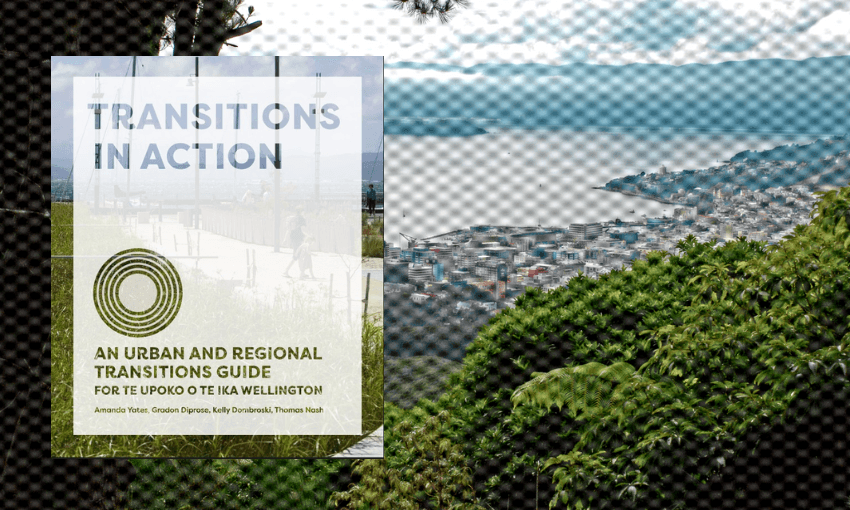It lays out a new framework for how Wellington can address a trio of socio-ecological crises. But what’s missing?
Windbag is The Spinoff’s Wellington issues column, written by Wellington editor Joel MacManus. Subscribe to the Windbag newsletter to receive columns early.
My theory of the 2022 local body election was that most voters sensed the city was in a malaise. Both the incumbent, Andy Foster, and his Labour-endorsed challenger Paul Eagle offered milquetoast half-measures, while Tory Whanau pitched a new identity for the city. Voters who may have otherwise been sceptical of Green ideas were willing to vote for Whanau because they wanted something, anything, to shake up the status quo.
That surprise victory gave Wellington City a Green mayor with a working majority around the council table. The following year, in the 2023 general election, Green candidates won the Wellington Central and Rongotai electorates, and the Greens topped the party vote in both seats. The Greens are now the dominant party in Wellington. It’s the first time the party has been in this position in any city, and it comes with new and uncomfortable challenges.
The Greens are used to being a minority political movement, which allows the luxury of idealism. Whether in parliament or on councils, Green politicians have been able to pick a couple of pet issues to push and don’t have to worry about the pressures of being in charge. The party’s official manifesto is more an expression of values than a theory of government.
The party has bigger ambitions now. When she was appointed co-leader, Chlöe Swarbrick said she wanted the Greens to eventually overtake Labour and become the largest party in a government. Wellington is the party’s first test to show whether it is capable of the big-picture thinking required to lead.
A newly released book attempts to do just that. Transitions in Action: An Urban and Regional Guide for Te Upoko o te Ika Wellington, by Amanda Yates, Gradon Diprose, Kelly Dombroski and Thomas Nash, proposes a transitional model for how Wellington can address socio-ecological crises, including climate change, biodiversity loss and social inequity. (A PDF of the book is available here.)
To the author’s credit, they don’t simply jump forward 30 years to an idealised green economy. They attempt to wrangle with the here and now to describe how that vision becomes reality. They base their theories on the Ngā Tohu Mauri Ora Urban Wellbeing Compass developed by Yates. The compass is made up of five enclosed rings, starting with the personal and expanding outward to the local and global: regenerative buildings, connected communities, regenerative circular economies, zero-carbon energy, and regenerative ecology.
Transitions in Action was primarily funded through the Building Better Homes, Towns and Cities National Science Challenge.. It is not explicitly party-political (one of the authors, Thomas Nash, is a Green Party regional councillor, though this research was done in his capacity as a Massey University social entrepreneur in residence), though its ideas clearly appeal to the Greens. Green MP Tamatha Paul and Green regional councillor Yadana Saw both spoke at the book launch.
The bulk of the book is short profiles of 32 projects, which the authors use as illustrative examples of their vision. “These are the kinds of initiatives, projects, organisations, businesses and people that will bridge the gaps between the path we – as a region and country – are currently on as well as the path we need to take to deliver a more resilient future,” they write. Projects include Metlink decarbonising the bus fleet, Hiko providing subsidised e-bikes in Wainuiomata, and Victoria University of Wellington’s new Ngā Mokopuna, a “living building” with a net positive carbon impact.
The book’s biggest weakness is one that can be applied to the environmental movement more broadly: it fails to prioritise the truly important above the merely nice. This is a fairly mild criticism considering the book was never intended to be representative – at the launch, Dombroski acknowledged there was no real formula for deciding what projects to profile; it was mostly a collection of stuff the authors were aware of and people they knew.
The most glaring hole is how much the book overlooks tech. The only scalable businesses highlighted are electric motorbike startup FTN Motion, carshare service Mevo and solar panel supplier Hoskins. The authors dedicated just as much space to profiling three community gardens. They’re wonderful projects for hobbyists, but the idea that urban farming is a scalable way to feed a city any time in the foreseeable future is naive at best.
Wellington has several promising climate tech businesses that could play a significant role in addressing climate change. Wellington City Council has done a good amount of work in the tech space, mostly through WellingtonNZ and its subsidiary, CreativeHQ. OpenStar is trying to develop viable nuclear fusion energy, Bspkl produces membranes that make green hydrogen cheaper to manufacture, Hot Lime Labs creates clean CO2 for commercial greenhouses. Even tech businesses that aren’t directly related to emissions reduction are still incredibly important to a climate-friendly city because they produce a high-value, zero-carbon export.
Left-leaning politicians have never had a natural relationship with the capitalistic side of tech, but the Greens are better placed than Labour to seize the narrative. If they’re going to be Wellington’s major party going forward, the Greens need to find a better way to work with and champion the city’s biggest growth industry.



